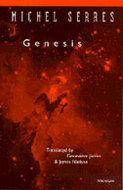Plug & Play and IT Arms Races ... wither Patients, Persons...
On the internet, in journals and the conference circuit judging from various calls for papers and other announcements, you cannot move for innovation, creativity, biotech and change that is inevitably transformative. This is good don't get me wrong but in the push for plug and play ecosystems or calls for an IT arms race something(s) are repeatedly lost.
In the former its about consumers with a single diagrammatic mention of 'patient'. I looked for the person as in person-centered. I looked for the client. In the latter the arms race will be a mechanistic affair: a circuit that runs from finance to technology. I realise the agenda and audience for the articles is specific: IT is Healthcare IT News and a Consultancy Co. As previously noted here on W2tQ it's not just that I may be talking out of turn: I'm out of Continent too.
Reading these articles just convinces even more of the need for a conceptual grounding. We really should read:
As for the IT arms race. Let's race by all means, that is what innovation and (rapid) progress is all about. But lets exercise our legs too and ensure that the data is not only stored holistically and distributed, but that this is the nature of its inclusive purpose and source.
Here and across the water they just don't get IT.
Prompted by:
PwC Health Research Institute December 2015
HIMSS Time for a health IT arms race









 orcid.org/0000-0002-0192-8965
orcid.org/0000-0002-0192-8965

